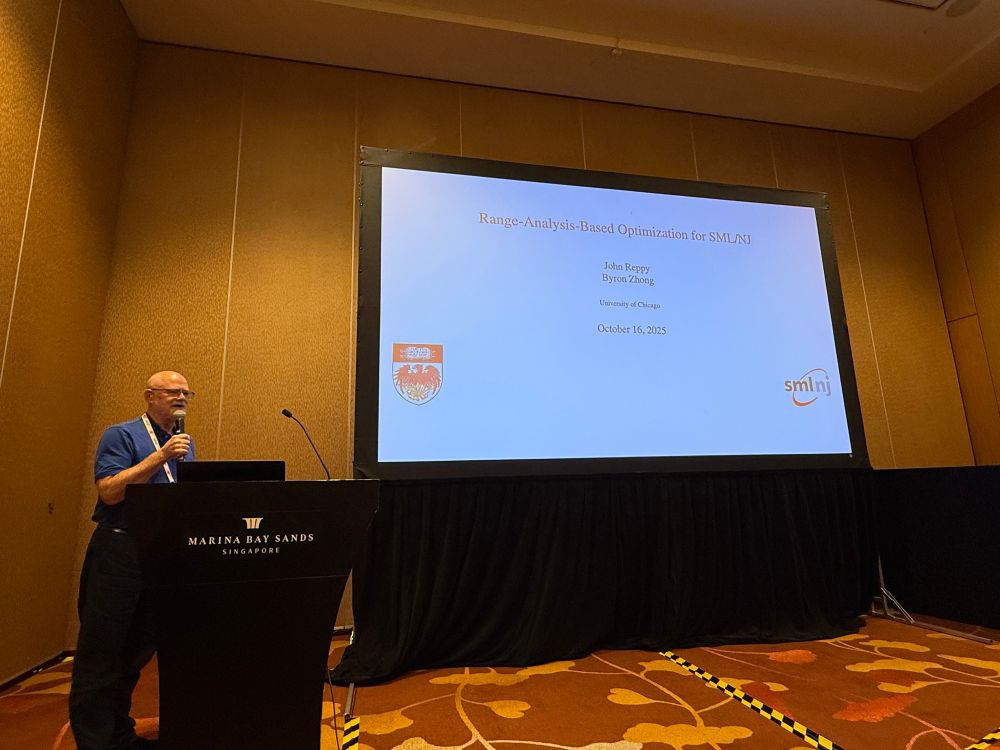
https://cs.nyu.edu/~shw8119/
cs.nyu.edu/~shw8119/25/...
cs.nyu.edu/~shw8119/25/...
They’re getting great scalability up to 8TB on a single node

They’re getting great scalability up to 8TB on a single node
Laxman Dhulipala emphasizes the benefits of single-node, shared memory parallelism

Laxman Dhulipala emphasizes the benefits of single-node, shared memory parallelism


















We have a great program with 9 talks!
If you are curious about compilers, type systems, module systems, formal proofs, and typed domain modeling, then this is the place for you

We have a great program with 9 talks!
If you are curious about compilers, type systems, module systems, formal proofs, and typed domain modeling, then this is the place for you
TypeDis: A Type System for Disentanglement
(Moine, Balzer, Xu, Westrick)
All for One and One for All: Program Logics for Exploiting Internal Determinism in Parallel Programs
(Moine, Westrick, Tassarotti)
Please share this with others!
www.janestreet.com/join-jane-st...

Please share this with others!
www.janestreet.com/join-jane-st...
TypeDis: A Type System for Disentanglement
(Moine, Balzer, Xu, Westrick)
All for One and One for All: Program Logics for Exploiting Internal Determinism in Parallel Programs
(Moine, Westrick, Tassarotti)
TypeDis: A Type System for Disentanglement
(Moine, Balzer, Xu, Westrick)
All for One and One for All: Program Logics for Exploiting Internal Determinism in Parallel Programs
(Moine, Westrick, Tassarotti)
this algorithm seems to be folklore -- the original Boyer-Moore algorithm is sequential, but I've found at least two mentions of the parallel algorithm in the wild: ⬇️

this algorithm seems to be folklore -- the original Boyer-Moore algorithm is sequential, but I've found at least two mentions of the parallel algorithm in the wild: ⬇️
An interesting connection from computation geometry is that 2D Delaunay triangulations can be computed as a special case of 3D convex hulls...
An interesting connection from computation geometry is that 2D Delaunay triangulations can be computed as a special case of 3D convex hulls...


Happy to announce that Yong Kiam Tan (tanyongkiam.github.io) will give an invited talk, titled:
From CakeML to Proof Checking, and Back Again
See the full program here:
conf.researchr.org/home/icfp-sp...
Happy to announce that Yong Kiam Tan (tanyongkiam.github.io) will give an invited talk, titled:
From CakeML to Proof Checking, and Back Again
See the full program here:
conf.researchr.org/home/icfp-sp...

